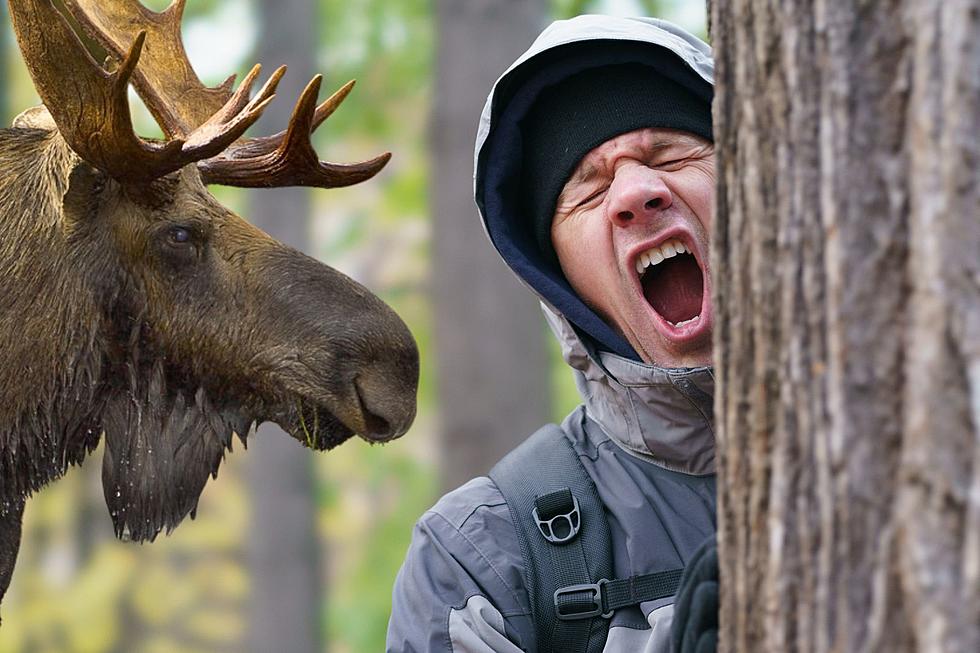
How to Protect Yourself Against Colorado’s Deadliest Animals
As you probably already know, Colorado is home to some of the most beautiful terrain in the entire country. It is easy to get lost in the natural beauty of places like Rocky Mountain National Park, Black Canyon of the Gunnison, or Horsetooth Reservoir. However, if you’re anything like me, sometimes a different thought runs into my mind when I explore the beauty of Colorado’s terrain.
Each time I go hiking, I always wonder what I should do if I stumble across a dangerous wild animal in Colorado. Should I run? Hide? If it tries to attack me, should I fight back?
After researching, I wanted to share my findings to help you escape a sticky situation with a dangerous animal on Colorado’s trails. Here is what I have found for defending yourself against Colorado’s wildlife.
Avoiding Black Bear Attacks: Stay Calm
There is a large black bear population in Colorado. They even have found themselves in places like Colorado State’s campus in recent years. However, if you find yourself in the wild with a black bear, there are a few things to consider.
If you see a black bear near you, you must slowly wave your arms. This is to help the bear realize you are human and not prey. Doing this will also make you look larger than you actually are. You also do not want to shout at the bear. Instead, talk to the bear in a low tone of voice to not provoke an attack. Finally, do not make any sudden movements that could provoke the bear. Move away slowly while keeping an eye on it at all times.
If you take all these steps and the black bear still attacks you, remember to never try to play dead. This is because if, in the rare instance, a black bear attacks you, they are most likely doing it in a predatory sense, not out of self-protection (remember, playing dead only applies to grizzly bears, which are no longer in Colorado). Instead, use any means necessary to attack the bear, aiming for its head and ears.
Avoiding Mountain Lion Attacks: Be as Intimidating as Possible
Mountain lions are relatively reclusive predators, but if you find yourself face-to-face with one, you must act as intimidating as possible. Wave your arms to make yourself look as big as possible. Never turn your back on the animal, bend down, or try to run. While facing the animal, try to reach for rocks and sticks to throw in the area of the mountain lion. However, only do this if you can reach for these items while standing. Never bend down to pick anything up.
You can also try to yell at it, but remember, never scream at a mountain lion. It could make you sound like a wounded animal and throw off your intimidation tactic.
If a Mountain Lion Attacks
If it attacks you, you need to fight for your life. Try to remain standing and use any object around you to protect yourself. If you have a backpack on, try to move it around to your front to protect your chest and neck.
Avoiding an Aggressive Moose: Talk Yourself Out of an Attack
Moose are the largest members of the deer family, and seeing a herd of them from a distance is a beautiful sight. However, if you find yourself too close to them, watch to see if they lower their head, lick their snout, or put their ears back. This could mean they feel threatened and could get aggressive.
In this case, remember to talk to the moose to establish your presence. Like before, slowly back away and do not run. If the moose still charges you after taking these steps, try running for cover. Good places for cover could be behind a tree, a large rock, or inside a vehicle if one is nearby.
If a Moose Attacks
If a moose pushes you to the ground, do not try to fight back. Any attack you make could be seen as a continued threat, and it will continue to try to pummel you. Instead, curl into a ball and protect your head. Stay still until it is done and leaves the area.
Avoiding a Rattlesnake Attack: Dress Your Best to Avoid a Bite
Of all the snakes in Colorado, the only three that are venomous are all types of rattlesnakes: the Western, prairie, and Massasauga rattlesnakes, respectively. These snakes pose a different problem than the others since they are much smaller but pack a deadly bite.
Remember that rattlesnakes naturally blend in with their surroundings and can be easy to miss in tall grass, rock ledges, or under logs.
Most bites occur on peoples’ ankles and feet, so never go hiking with open-toed shoes. Instead, wear a good pair of hiking boots or shoes, and wear a thick pair of socks. Wearing loose-fitting pants could also help get a bite away from your skin. Avoid walking in tall grass, but if you must, bring a walking stick to inspect or whack the grass before going in.
If a Snake Bites
If you are bitten, you must stay calm to prevent your heart rate from increasing. Do not try to suck out the venom or tamper with the site of the bite. Remove anything that can constrict blood flow, like watches or necklaces. Most importantly, you need to dial 911 to get help.
Remember, even if you have no cellular service, calling emergency services will connect you to the closest tower regardless of provider.
Avoiding an Aggressive Elk: Assert Your Dominance
Elk are another type of large deer species that can be found in Colorado. While it is important to keep in mind safety around them at all times of the year, between September and October is when they start rutting. This is when hundreds of elk gather at a time to try to find a mate, and while it can provide a fantastic scene of love, this is when male elks can get the most aggressive.
With an angry elk, it is important to try to assert your dominance. This can be done by making yourself look as big as possible and being loud. If you have a jacket on, try flapping it around over your head. Another way of showing your dominance is by constantly maintaining eye contact. Do this until you can find a tree or vehicle to hide behind.
If an Elk Attacks
Finally, if an elk charges and knocks you over, you must curl up in a ball and protect your head. This is similar to how you would want to react if a moose were to charge you.
4 Tips to Avoid Human-Wildlife Interactions
Remember, there is nothing wrong with enjoying Colorado’s wildlife when out on the trail, but there are a few things you need to remember before heading out.
1. Always try to keep your distance. A good rule of thumb provided by the National Park Service is 25 yards of distance from most wildlife and 100 yards for predators. This way, you can watch them in their habitat while not disturbing them.
2. You should also know what animals you might come across during your hike. After finding out, inform yourself on what to do during a possible interaction with any wildlife.
3. Keep any food and trash sealed in containers to not let any smells out. Also, never feed any animals you see out in the wild.
4. Finally, try to always hike with someone else. Dealing with an attack from a wild animal will always be harder when unaccompanied. In some circumstances, having another person can help in intimidation. Also, who doesn’t love going out in the wilderness with a friend?
Even if you keep your distance from all wildlife and hike responsibly, being prepared for the worst not only can be beneficial to help others, but yourself. Regardless, always remember to be responsible when viewing wildlife as you see what Colorado’s wilderness has to offer.

